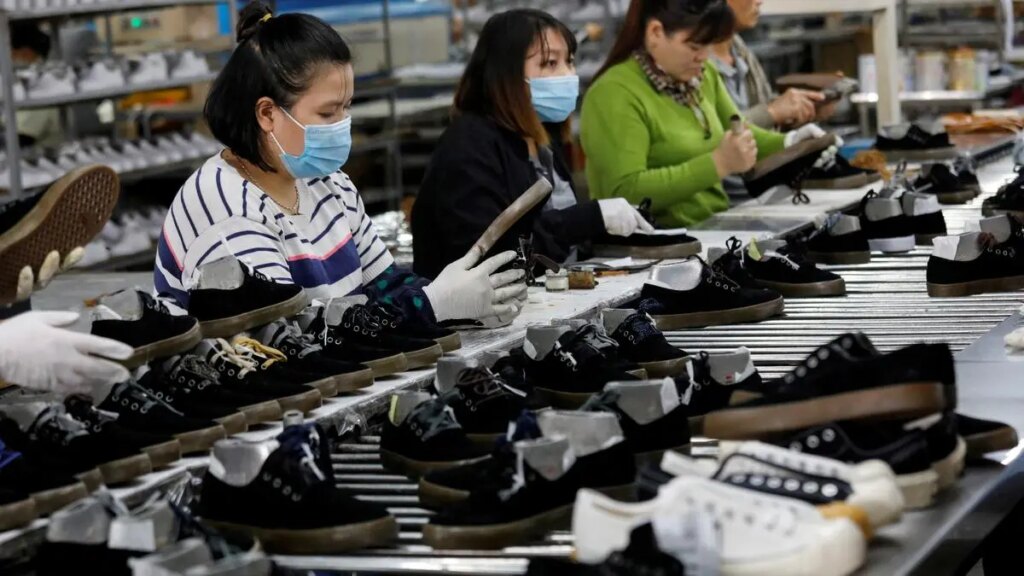
These days, more than half of Nike’s shoes are produced in Vietnam while Lululemon, Gap and Foxconn have suppliers there.
| Photo Credit:
KHAM
For countries across the globe that export goods to the world’s largest consumer market, President Donald Trump’s return to the White House has meant six months of frenzy and doubt. When it comes to his chaotic, global trade war, few have been hit harder than Vietnam.
The Southeast Asian nation is one of the most trade dependent, with exports making up close to 90 per cent of GDP. Many in the country of 100 million people have been lifted out of poverty thanks to global demand for its products, much of which comes from America. But as Bloomberg Originals shows in this mini-documentary, that trading landscape is shifting fast, and Vietnam’s low-cost, skilled labour force may be who suffers most.
Vietnamese exports to the US surged in recent years as manufacturers wary of a geopolitical rivalry between the planet’s two largest economies sought to hedge their bets, shifting production to other countries in a strategy called “China+1.” These days, more than half of Nike’s shoes are produced in Vietnam while Lululemon, Gap and Foxconn have suppliers there.
But this lucrative state of affairs for Vietnam came to a screeching halt in April. During the rollout of his so-called reciprocal tariffs, Trump promised a 46 per cent levy on goods from Vietnam—almost double the rate for Japan and India. Though a recent deal between the two nations lowers that to 20 per cent, it comes with a 40 per cent tariff on any goods deemed to be transshipped. That last bit is aimed at a key tactic employed by Chinese companies to avoid US levies.
Caught in the middle of all this are Vietnamese-based businesses trying to navigate an unpredictable environment—one that’s scaring off customers and making long-term planning difficult.
More stories like this are available on bloomberg.com
Published on July 11, 2025

